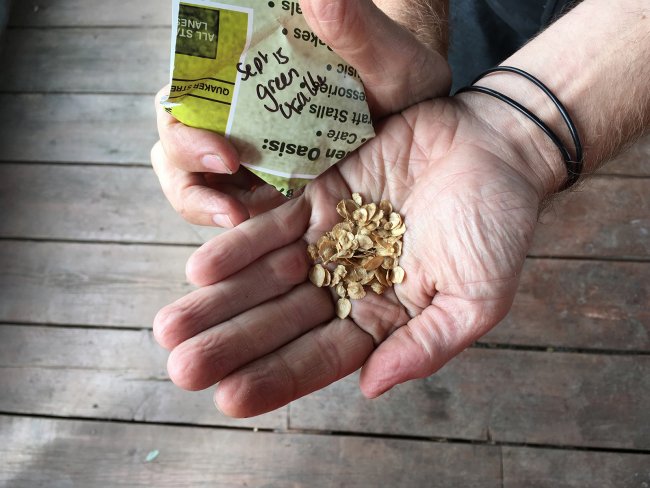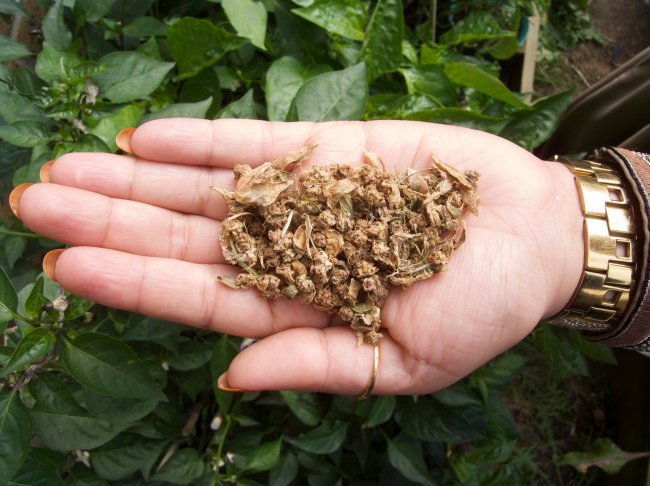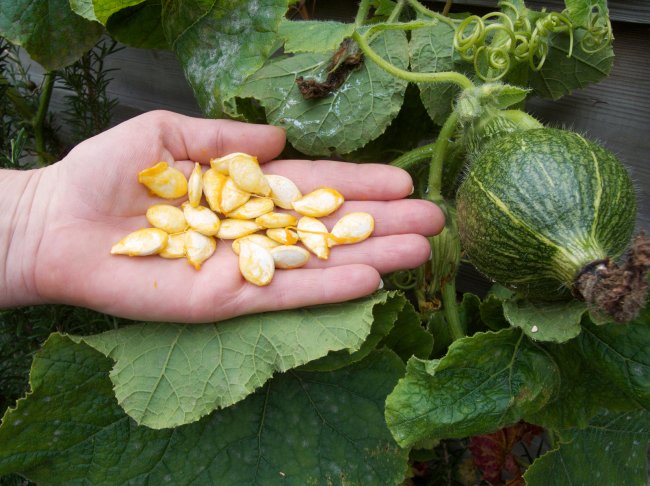A Guide to Saving Seeds
By Anton Rosenfeld, Heritage Seed Library, Garden Organic
Why Save Seeds?
Seed saving has always been an essential part of growing our own food. Ever since we started cultivating crops, it has been vital to save seeds to ensure that we can continue to produce harvests for the future. In the more recent times, many growers have become more detached from this process as we have left seed production to the hands of specialised seed companies. Although this may bring some advantages such as specialisation and economies of scale there are many reasons why growers should have a go at saving their own seed:
Locally saved seeds become better adapted to local conditions
A grower that has repeatedly saved seeds from the best performing plants in a locality will have developed a stock of seed that has a proven track of growing in that place. Their variety will perform better than a stock of seed that has been bred commercially and grown in a different location.
Seed saving is one step further to self sufficiency
If you have already taken the step to growing your own food, then reducing your dependence on commercial seed companies is another step to producing sustainable food. It shortens supply chains and reduces dependency on external inputs.
Seed saving is fun and satisfying
For a plant to produce seed, you need to allow it to complete its entire life cycle. This can be very satisfying and a new learning experience. For some plants such as beans, we are familiar with watching the plants produce seeds, but for other plants, it might be something completely new. How many of us have seen a lettuce produce seeds before?
Seed saving can preserve heritage and unusual varieties
Some varieties are rare to find in seed catalogues and seed saving might be the only way of preserving them. Some of these varieties may have traits that are not present in regular commercial varieties, so maintaining them through informal seed saving networks is a good way of boosting genetic diversity.
Seed saving can save you money
Although the cost of a packet of seeds might not seem like much, if you are growing a large selection of things, the price can soon mount up. Seed saving makes sense if you are growing a diverse range of crops in small quantities.
Things to Consider
You might decide to save seeds from just a few crops rather than from everything. If you do decide to have a go, then there are a number of considerations you might want to take into account:
Does it grow well here?
Anything that has already been grown in the location will be a better bet as it already has a proven track record. That doesn’t stop you experimenting, but be prepared that it might not work, especially if it has come from a different country. Any F1 hybrid seeds are produced from the crossing of two different parents, so saving seeds from these will produce a mixture of plants with different features.
How long do you have to grow it for?
Some plants have to be grown for much longer than others before you get seeds from them. Anything that we normally eat the fruits or pods from such as beans, squashes or tomatoes will produce seeds within a normal growing season. Some plants such as carrots need to be left for over a year. You may decide that you don’t want something in the ground that long, if space is limited.
Will my varieties cross with others?
The danger of different varieties of plants that are the same species close together is that they will cross and produce seeds that are not the same as the original. Some plants cross much more readily than others, and steps need to be taken to isolate them if you want to produce seed that is pure. Plants can be isolated by distance, use of physical barriers such as a net or in time by only growing one variety for seed each year. The isolation requirements of individual crop types are given in the Heritage Seed Library guide to seed saving.
Seed Saving from Non-traditional Food Crops
There are many non-traditional food crops that have been introduced more recently to the UK to reflect the multicultural nature of our food growing communities. Some of these have a longer track record of growing in the UK than others. Often these seeds are difficult to find in UK seed catalogues, so seed saving can be the best way of maintaining these varieties. There are a number of extra considerations when growing these crops for seed:
Is the growing season long enough?
For plants that are sensitive to cold, the UK has a short growing season, sometimes only 5 months can be guaranteed to be warm enough. Even within a glasshouse, the light levels drop dramatically after September, so plants grow much more slowly. Many crops from warmer climates take a long time to flower and produce seeds, often longer than nine months. These varieties are unlikely to be able to reach the stage of seed production within the UK growing season. Selecting early maturing varieties are likely to be more successful for seed saving in our climate.
Is the plant sensitive to day length?
Many plants grown closer to the equator will only flower and produce seed if the day length is close to 12 hours. Once transported to our latitude, the long 16 hour days of summer just encourages the plants to produce lots of leaves and never flower. This might be fine if you are trying to harvest a leafy crop but is no use if you wish to save seeds to be able to grow it next year. Chancing on varieties that are not sensitive to day length can be a matter of luck, although varieties grown at higher latitudes are likely to be more successful. For example, some of the Asian types of gourds are also grown in Southern Europe, and these varieties are more likely to be successful in the UK.
Does it have the right pollinators
Many of the more unusual crops are happily pollinated by our bees and other UK insects so don’t present a problem for seed saving. However there are one or two that have more specific requirements. Many of the gourds have flowers that open at night and are pollinated by moths in their countries of origin. These need to be hand pollinated to achieve successful seed production. We have found that this works fine if it is done first thing in the morning – there is no need to go out in the middle of the night!


